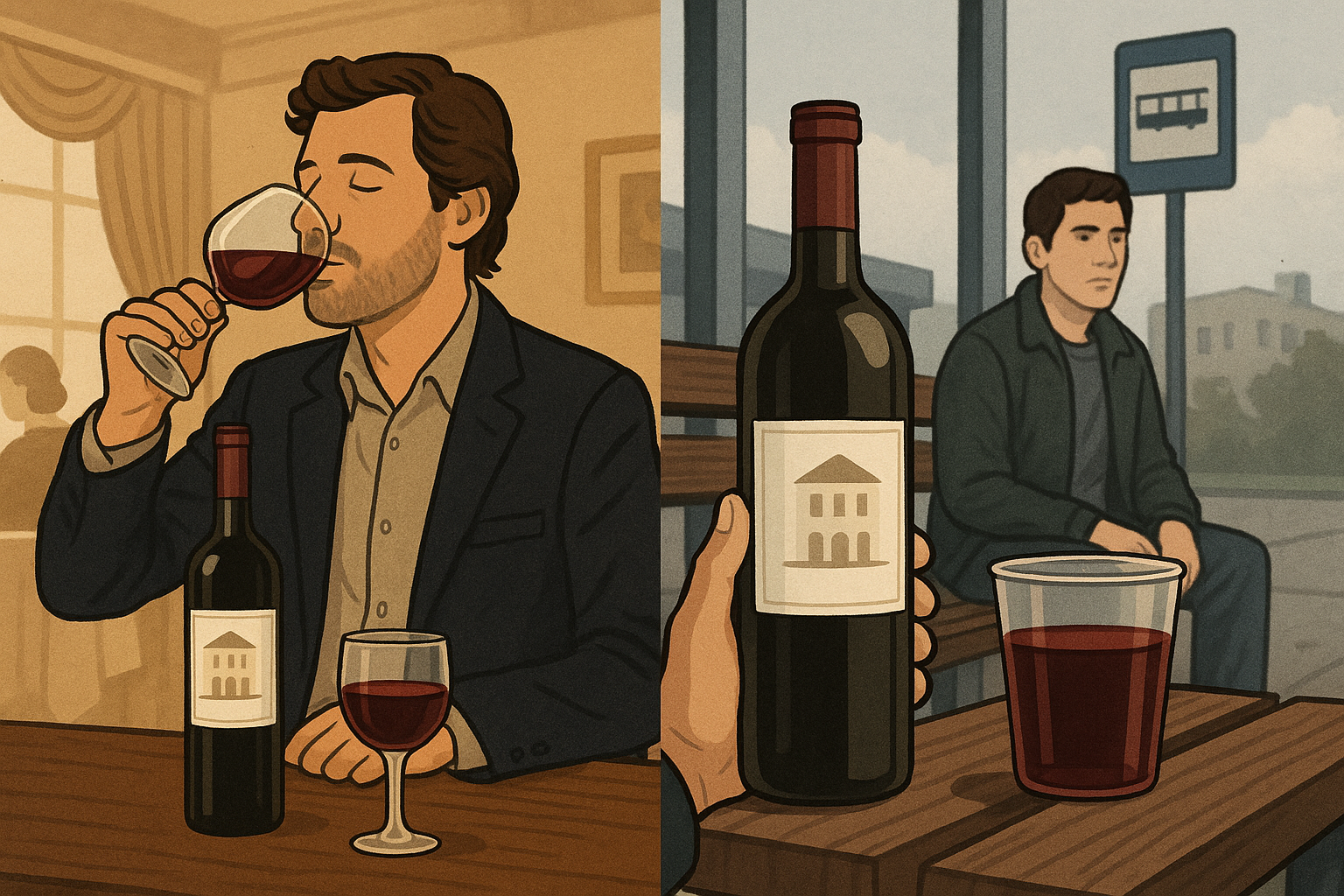In 2008, Caltech researchers ran an experiment: participants tasted the same wine but were told different prices. The higher the “declared” cost, the more pleasure they reported, and brain scans confirmed it. On fMRI, the brain’s pleasure centers lit up more brightly when people believed they were drinking expensive wine. As Dr. Antonio Rangel, the study’s author, put it: pleasure centers are modulated by cognitive information, such as price. Price acts as another channel of information about quality, shaping the subjective experience.
A similar effect appeared in 2007, when violinist Joshua Bell played a 43-minute concert on a $3.5 million Stradivarius in a Washington, D.C. subway station. His earnings: $32, twenty of which came from a passerby who recognized him. The official purpose of the experiment was to show that, in the rush of everyday life, we can miss something extraordinary happening right beside us. To me, it’s also evidence that without the skills to assess quality, people default to external cues: the setting, the context, the price.
I’ve seen this dynamic firsthand. About ten years ago, I agreed to help a nonprofit project with a noble mission but a tiny budget of €1,000 per month. At the same time, I was consulting for a startup that paid me the same amount for a single day of work. The difference in attitude was striking. The nonprofit challenged nearly every change I proposed, demanding detailed explanations. The startup asked only relevant questions and trusted my expertise. When I asked why, the nonprofit team hinted that “no truly in-demand expert would work for such a fee.” Price had become their marker of quality.
The lesson is simple: if your client or user lacks the skills to judge the quality of a product or service, they will rely on what they understand: the price, the brand, the context.
As far as I can see, there are three ways to influence this:
- Build expertise — teach your client to see and understand the value.
- Set a price that supports the perception you want.
- Work with emotions — design solutions that relieve pain and create visceral, behavioral responses, so the value is felt without rational proof.
I’ve long stopped taking on paid projects where the client can’t recognize the value they’re buying. Volunteering is different: it’s built on other principles. But in professional work, price isn’t just a number on an invoice, it’s a signal, heard long before the results arrive.

